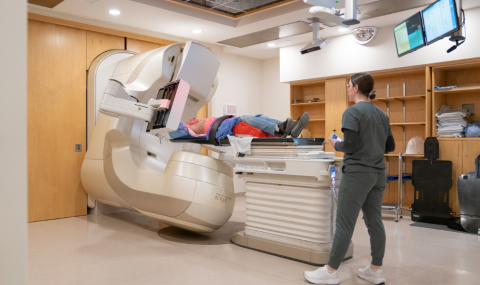Equipment Needed: - Sterile tray with suture removal scissors.
- Chlorhexidine 2% and 70% alcohol swabs.
- 2 - 4X4 sterile gauze squares.
- Transparent occlusive dressing.
- Non-sterile gloves
- Sterile gloves
- Bedside stool (if required).
| | Procedure | | Approved nurses in CCTC may remove femoral arterial pressure monitoring catheters. Removal of large femoral sheaths used during cardiac catheterization or balloon pumping is not an approved skill in CCTC. Nurses approved in CCU/cardiac catheterization lab to remove cardiac catheterization sheaths may remove them in CCTC. | 1. | Check Coagulation Tests/Medications Check INR/PTT and platelets. If INR/PTT is prolonged (INR > 1.5) or platelets < 50,000 review orders with physician. If patient is receiving any medications that affect coagulation (e.g., anticoagulants, fibrinolytics, antiplatelet agents), review with physician prior to removal. NOTE: If the patient has a significant coagulopathy the removal order should be reviewed to determine whether treatment is warranted (e.g. administration of plasma or platelets) or whether removal should be delayed. Medications that interfere with clotting should also be reviewed. The catheter site may also influence bleeding risk. Additional site pressure may be required. DO NOT clamp the line off prior to removal. This will not reduce bleeding from the site but may allow a thrombus to form that could be dislodge and occlude blood flow to the distal extremity. NURSES DO NOT REMOVE A CVC THAT HAS BEEN INADVERTENTLY PLACED INTO AN ARTERY. IF THE VESSEL HAS BEEN DILATED, LEAVE THE DEVICE IN PLACE WITH PRESSURIZED SALINE TO PREVENT CLOTTING. VASCULAR SURGERY SHOULD BE CONTACTED FOR ASSESSMENT AND REMOVAL. | | 2. | Optimize Position Obtain a bedside stool if required to ensure that nurse is positioned above the femoral artery when applying pressure. Direct, downward pressure is required to compress the artery. | | 3. | Maintain Aseptic Technique Perform hand hygiene and don non-sterile gloves. Open sterile dressing tray and set up field. Remove old dressing, discard dressing and non-sterile gloves. Don sterile gloves. | | 4. | Cleanse and Remove Sutures Cleanse site with 2% chlorhexidine and 70% alcohol swab and remove any sutures. To remove an adhesive securement device, use a chlorhexidine and/or alcohol based swabstick to "shovel" under the dressing from edge to centre until released from the skin. | | 5. | Remove Catheter Gently withdraw catheter while applying direct pressure with the sterile gauze. Stop withdrawal and notify physician if the catheter does not withdraw easily. Hold pressure until physician assesses limb if partial withdrawal occurs. The nurse should be positioned directly over the femoral artery using his/her body weight to provide direct pressure. Direct alignment improves body mechanics and pressure application. Inspect catheter for clots and ensure entire catheter has been removed. IN THE EVENT OF CATHETER FRACTURE:
Apply direct pressure over the site and notify the physician immediately. If the catheter fragment is palpable, apply additional pressure distal to the catheter. Catheter fragment embolism can occlude distal extremity circulation; urgent surgical excision is required. | | 6. | Apply and Maintain Pressure Apply direct, manual pressure for a minimum of 10 minutes. Place pressure slightly above the stab wound. Carefully check the site. If oozing continues, compress for 5 more minutes before checking again. Hold direct pressure for a minimum of 5 - 10 minutes after evidence of bleeding has stopped. Prolonged and direct pressure is required to stop bleeding from an artery. Inadequate hemostasis can lead to retrograde bleeding. Hematomas can cause impaired circulation to the distal extremities and are painful for the patient. Check distal circulation every 5 minutes X 30 minutes, then Q 30 minutes X2, then Q 1 H X 4. Clots can form on catheter tips; these can embolize to the distal extremity. | | 7. | Apply Light Dressing When bleeding has stopped, apply a 2 X 2 gauze or transparent dressing over the site. The transparent dressing protects against entry of pathogens while allowing observation of the site. Pressure dressings are NOT used as they will not stop an artery from bleeding. They may delay detection of bleeding. | | 8. | Remove Gloves Remove sterile gloves and perform hand hygiene. | | 9. | Immobilize Limb Immobilize the leg. A sandbag can be used to remind the patient not to flex the hip. An ankle restraint can be used to promote immobilization. Sandbags do not provide pressure or replace adequate hemostasis with direct manual pressure. They are only used to remind the patient not to move the limb. Significant occult bleeding can occur from a femoral puncture site. | | 10. | Patient Positioning Nurse the patient flat without hip flexion for a minimum of 2 hours (longer bed restriction should be considered for patients with increased bleeding risks) (1). The patient may have a pillow under his/her head, but should not be allowed to lift their head or flex their hip. A sandbag can be applied to remind the patient not to flex the hip (but will not provide any hemostasis). Hip flexion or abdominal straining can increase femoral artery pressure and risk for bleeding. A review of the literature and evaluation of the complication rate in patients following implementation of a 2 hour bedrest protocol post cardiac catheterization supported a reduction in the duration of bedrest from 6 hours to 2 hours (1). Immobilization of the leg during the bedrest period is important; transfer requires movement from one bed to another. The patient requires close monitoring of the site and distal extremity and the nurse:patient ratio on the floor may be insufficient. | | 11. | Do Not Use Pressure Dressing Do not apply a pressure dressing. Cessation of arterial bleeding requires direct pressure; a pressure dressing provides inadequate compression, increases patient discomfort and can delay the detection of bleeding. One RCT (N 1075) showed increased nausea, back pain, groin pain and urinary complications in patients treated with pressure dressings versus no pressure dressing. There was no difference in bruising between groups; the group with pressure dressings had less iniital bleeding (that required manual pressure), however, bleeding occurred later in the pressure dressing group. (2). | | 12. | Monitor CCM and Site Assess site for bleeding and evaluate distal extremity for color, circulation and motion Q 5 minutes X 30 minutes, q 30 minutes X 2 then q 1 h X 4. Apply direct pressure if bleeding is detected. REPORT ANY CHANGES TO THE PHYSICIAN IMMEDIATELY and document in clinical record. Bleeding or bruising is an important complication following arterial catheter removal. Impaired circulation to the distal extremity can occur secondary to migration of a thrombus or catheter fragment, hematoma formation or vascular injury. Urgent medical intervention may be required to restore limb perfusion. | | 13. | Document Document removal and catheter assessment (intact) in the Device section of the EHR. Document assessment of site and CCM at time pressure is released, 15 minutes later, then Q 30 minutes X 2, then Q 1 H X 4. Document abnormal findings in the assess/reassess section and notify provider. Update "date and time removed" in the Actions and Situational Awareness section in Nurse View of the EHR, and communicate recent removal during shift-to-shift report. Include this information in the documented Transfer of Accountability. |
References: 1. Vlasic, W., Almond, D. (1999). Research-based practice: reducing bedrest following cardiac catheterization. Can J Cardiovasc Nurs. 10(1-2):19-22. 2. Botti, M., Williamson, B., Steen, K., McTaggart, J., and Reid, E. (1998). The effect of pressure bandaging on complications and comfort in patients undergoing coronary angiography: a multicenter randomized trial.
|



